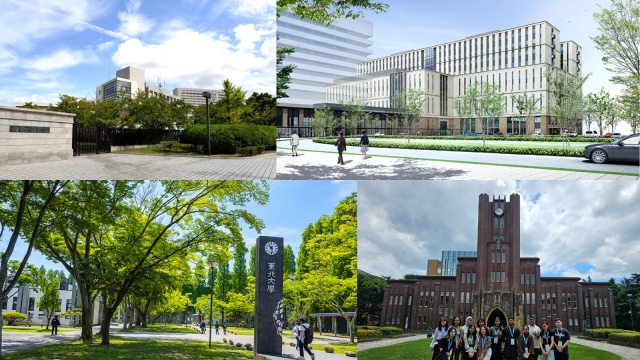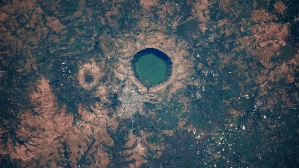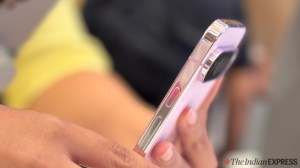NEET UG: Here’s why Japan could be the next hotspot for Indian medical aspirants
According to the Japan Student Services Organization (JASSO), there were 279,274 international students in 2023, marking a 20.8% increase from 2022. By May 2024, the number rose to 336,708, a further 21% jump.
 Medical colleges in Japan: Osaka University, Keio Medical School, Tokyo University, Tohuku University (Clockwise; Images via official websites)
Medical colleges in Japan: Osaka University, Keio Medical School, Tokyo University, Tohuku University (Clockwise; Images via official websites)– Avinav Nigam
The National Eligibility-cum-Entrance Test for Undergraduate (NEET UG) is the gateway to MBBS admissions in India, with lakhs of candidates competing for a limited number of seats each year. In 2025, the exam saw participation of over 22 lakh candidates, reinforcing medicine’s position as one of the most sought-after domains of higher education.
However, given the intense competition and the restricted intake for MBBS courses domestically, many students consider overseas medical education to secure their career path.
India’s first MBBS batch graduated in 1839; Know how Britishers shaped medical education system
Traditionally, destinations such as Eastern European nations, Russia, and West Asian countries have been popular choices. But in recent years alternatives have emerged. One such country, Japan, has emerged as a viable alternative, offering high-quality education, globally respected medical programmes, and growing opportunities in healthcare.
Here is an in-depth look at what studying medicine in Japan requires for Indian students.
Visa policy for students in Japan
Studying in Japan begins with obtaining a Certificate of Eligibility (COE) from the admitting institution. Once issued, students must apply for a student visa at their nearest Japanese embassy or consulate. This visa typically matches the course duration, ranging from one to four years.
Applicants must prove sufficient financial resources, either personal funds or sponsorship, to cover tuition and living costs. Upon arrival, students register for a Resident Card and enroll in the National Health Insurance scheme, which covers about 70% of medical expenses. Premiums are relatively affordable, usually between JPY 1,800 – 2,000 per month (Rs 1,100 – 1,200).
Medical courses and specialisations in demand
While Japan’s six-year MD (MBBS equivalent) remains the primary medical track, English-medium offerings are expanding. In addition to traditional disciplines, newer specialisations gaining traction include Global Health, Public Health, and Biomedical Science.
Japan’s aging population has also created demand for fields such as Geriatric Nursing, Palliative Care, and Digital Health/Bioinformatics. Some universities, like Keio University, are introducing Healthcare Management and Nurse Practitioner programmes, which combine clinical skills with leadership training.
Ideal application timeline for class 12 graduates in 2026
Students completing Class 12 in February or March 2026 and aiming to pursue MBBS in Japan will first need to appear for NEET UG 2026, as most Japanese universities require Indian applicants to hold a valid NEET qualification. Even if they clear NEET in 2026, the earliest feasible academic intake in Japan is April 2027.
This is because April is the primary academic intake for Japanese universities, and the timeline between NEET results and the start of the academic year is too short to complete all other requirements. These include meeting English or Japanese language proficiency standards, securing a Certificate of Eligibility (COE), and arranging financial sponsorship.
As a result, there is typically about a one-year gap between finishing Class 12 and beginning an MBBS programme in Japan. This period is not wasted, it is usually used to strengthen language skills, complete university applications, and prepare the necessary documentation for a smooth transition.
Student enrolment trends in medical courses
Japan has 82 medical schools, of which 51 are public and 31 private. Roughly admitting 9,000 new medical students annually across MD and clinical tracks. While specific data on international enrolment in medicine is unavailable, the broader trend shows rapid growth.
According to the Japan Student Services Organization (JASSO), there were 279,274 international students in 2023, marking a 20.8% increase from 2022. By May 2024, the number rose to 336,708, a further 21% jump. Around 68% of these students were enrolled in higher education institutions, including medical, nursing, and allied health programmes.
Major institutions with high Indian student concentration
Indian students tend to cluster in top-tier and English-friendly universities, including:
–University of Tokyo: Renowned for MD research and clinical excellence.
–Keio University School of Medicine: Offers multiple English-medium graduate medical programs.
–Osaka University and Tohoku University: Known for biomedical sciences and nursing specialisations.
Additionally, smaller hubs like Hirosaki University also attract niche groups, often through research collaborations.
Costs of studying medicine in Japan
Studying medicine in Japan involves two main cost components – – tuition and living expenses. This varies depending on the type of institution and the city of residence. Public universities are the more affordable option, with annual tuition fixed at around JPY 535,800 (approximately $5,000).
Private universities, on the other hand, charge significantly higher fees, typically ranging from JPY 1.2 million to JPY 2 million ($11,000 to 18,000) a year. For example, the six-year MD program at Tokyo Medical University comes to a total of JPY 29.4 million, which averages about JPY 4.9 million per year.
Living expenses are an equally important consideration. Students generally spend between JPY 120,000 and JPY 150,000 a month (Rs 66,000 to Rs 83,000), which covers rent, food, utilities, and daily transport. Costs tend to be higher in major cities like Tokyo and lower in regional areas.
When tuition and living expenses are combined, the total annual cost ranges from roughly JPY 1.3 million (Rs 8 lakh) for public universities to around JPY 2.2 million (Rs 14 lakh) for private institutions. Students should also plan for additional one-time expenses such as visa fees, flight tickets, and initial accommodation deposits, which can add to the first-year budget.
Placement prospects and FMGE considerations
Japan’s medical graduates must pass the Japanese National Medical Licensing Exam, which requires advanced Japanese proficiency (often JLPT N2 or higher). The Foreign Medical Graduate Examination (FMGE) is not applicable for practice in Japan.
However, Indian students returning home must clear the FMGE to practice in India. For nursing graduates, national or state licensure and supervised practical training are mandatory before full registration.
Fluent Japanese-speaking graduates enjoy high employability within Japan’s healthcare sector, especially under the Specified Skilled Worker (SSW) pathway, which has high demand for nursing and caregiving professionals.
(The author is founder and CEO, TERN Group



- 01
- 02
- 03
- 04
- 05




























